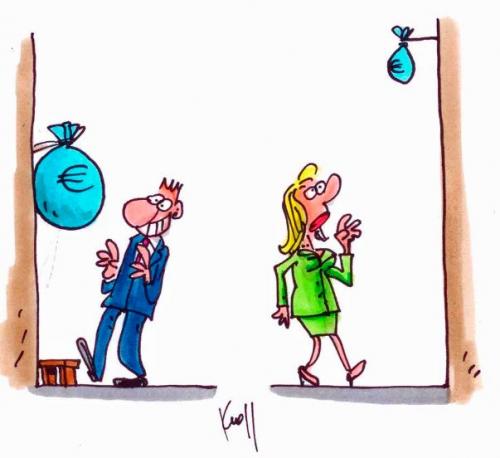Equal Pay Day: Gender Pay Gap stagnates at 16.4% across Europe
Women in Europe still work 59 days ‘for free’ – this is what the latest figures released by the European Commission show. The gender pay gap – the average difference between women and men’s hourly earnings across the entire economy – has barely moved in recent years and still stands at around 16% (it stands at 16.4% as the year before). The latest figures mean European Equal Pay Day is marked on 28 February, for the second year in a row. The EU-wide event marks the date in the new calendar year from which women really begin to be paid for their work as compared to men. In effect it means that today women work 59 days "for free" until they match the amount earned by men. This is the fourth time the Equal Pay Day takes place at European level: following its launch by the Commission on 5 March 2011, the second day took place on 2 March 2012 and the third on 28 February 2013.

"European Equal Pay Day reminds us of the unequal pay conditions women still face in the labour market. The pay gap has only narrowed marginally in recent years. To make things worse, the very slight decreasing trend for the past years is largely a result of the economic crisis, which has seen men's earnings decrease, rather than women's earnings increase," said Vice-President Viviane Reding, the EU's Justice Commissioner. "Equal pay for equal work is a founding principle of the EU, but sadly is still not yet a reality for women in Europe. Following years of inaction, it is time for a change. The European Commission is currently working on an initiative to trigger change, so that in the near future we will no longer need an Equal Pay day."
The gender pay gap is shown as a percentage of men’s earnings and represents the difference between the average gross hourly earnings of male and female employees across the EU economy. The latest figures show an average 16.4% gender pay gap in 2012 across the European Union. They show stagnation after a slight downward trend in recent years, with the figure around 17% or higher in previous years. A continuous decreasing trend can be found in Denmark, the Czech Republic, Austria, the Netherlands and Cyprus, where other countries (Poland, Lithuania) have reversed their decreasing trend in 2012. In some countries like Hungary, Portugal, Estonia, Bulgaria, Ireland and Spain, the gender pay gap has increased in recent years.
The declining trend in the pay gap can be explained by several factors, such as a rising share of higher educated female workers or the greater impact of the economic downturn on some male-dominated sectors, such as construction or engineering. The change is therefore not solely due to improvements in pay and working conditions for women.
A report by the European Commission from December 2013 on the implementation of EU rules on equal treatment for women and men in employment (Directive 2006/54/EC) found that equal pay is hindered by a number of factors. These include a lack of transparency in pay systems, a lack of legal clarity in the definition of work of equal value, and procedural obstacles. Such obstacles are for example the lack of information of workers necessary to bring a successful equal pay claim or including information about the pay levels for categories of employees (IP/13/1227). Increased wage transparency could improve the situation of individual victims of pay discrimination who would be able to compare themselves more easily to workers of the other sex.
The Commission is currently looking at options for action at European level to improve pay transparency and thereby tackle the gender pay gap, helping to promote and facilitate effective application of the principle of equal pay in practice.
Source: European Commission
- 361 reads
Human Rights
Ringing FOWPAL’s Peace Bell for the World:Nobel Peace Prize Laureates’ Visions and Actions

Protecting the World’s Cultural Diversity for a Sustainable Future

The Peace Bell Resonates at the 27th Eurasian Economic Summit

Declaration of World Day of the Power of Hope Endorsed by People in 158 Nations

Puppet Show I International Friendship Day 2020

